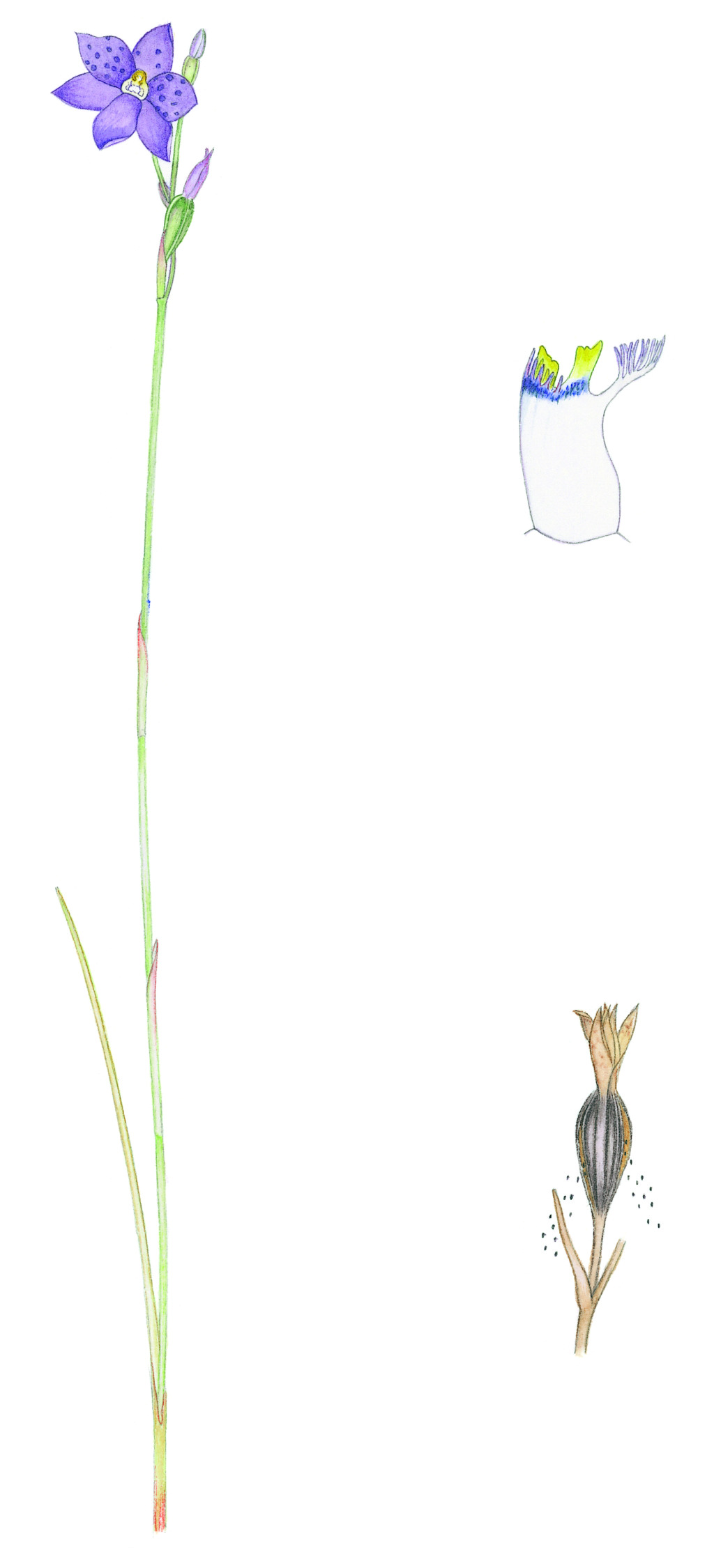Thelymitra juncifolia
Lindl.Flowering stem erect, straight, 15–30 cm tall, 2–3 mm diam., mostly straw-coloured to green, reddish basally. Leaf filiform to linear-lanceolate, 10–20 cm long, 5–10 mm wide, canaliculate, dark green, often reddish at base. Inflorescence 1–5-flowered, loose. Sterile bracts 2 or 3. Perianth segments ovate to ovate-lanceolate, 10–13 mm long, pale blue or mauve, usually with large darker spots on dorsal sepal and petals. Column 4–6 mm long, white or blue, often with a dark brown, reddish or dark purple subterminal band; mid-lobe not hooded, central part truncate, with a central patch of crowded fingerlike vertical calli, yellow, orange or brownish, often bordered from inside (near anther) with a vertical plate-like crest, sometimes taller than calli; accessory-lobes incurved over anther, columnar, protruding beyond the mid-lobe, oblique or flat-topped, yellow to orange, crest smooth to denticulate; lateral lobes 1–2 mm long, extending horizontally or oblique, flattish, ending in a mop-like white or mauve hair-tuft. Anther protruding below or between column-arms, shortly beaked. Flowers Oct.–Dec.
LoM, Wim, GleP, VVP, MuF, GipP, OtP, WaP, Gold, CVU, GGr, DunT, NIS, EGL, EGU, WPro, HSF, HNF, OtR, MonT, VAlp. Also SA, NSW, ACT, Tas. Found in many habitats including open forest, heathland, heathy forest, woodland and coastal scrub in a range of well-drained to moisture-retentive soils.
Distinguished from Thelymitra ixioides by the generally smaller, more tardily opening, mostly self-pollinated flowers (insect-pollinated variants occur).
 Spinning
Spinning

